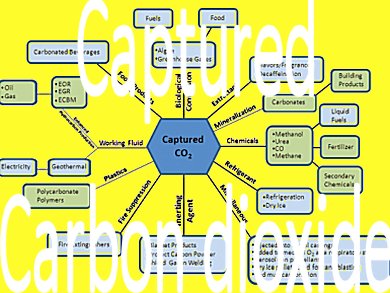The need to reduce greenhouse gases is becoming ever more important and many countries are working towards programs for capturing and storing the CO2 emitted by heavy industries and power generation. The CO2 either needs to be sequestered into permanent, safe storage or, alternatively, used as a resource.
CO2 is a stable compound with a low energy state and does not readily participate in chemical reactions without added energy. Additionally, the supply of CO2 far exceeds the current demand. Identifying economically feasible approaches that utilize large amounts of CO2 as a feedstock is very challenging.
The United States Department of Energy (DOE), through its National Energy Technology Laboratory (NETL), has an active carbon sequestration program. One area of development is CO2 Utilization Focus Area, which aims to identify and develop a suite of technologies that can beneficially use CO2 to produce useful products that can generate revenue to offset capture costs associated with Carbon Dioxide Capture and Storage (CCS) implementation, contribute to CO2 emissions reductions, and reduce the demand for petroleum-based feedstocks and products. Darin Damiani, NETL, and colleagues summarize the current status of CO2 use in the USA:
- Enhanced hydrocarbon recovery shows great promise for both increasing energy supply and storing large volumes of CO2. CO2-enhanced oil recovery and CO2-enhanced gas recovery are techniques in which compressed CO2 is injected into depleted oil and gas fields to increase production.
- Chemicals production: advances in catalysts and alternative reactive pathways may make it feasible to use CO2 as a feedstock in the production of bulk chemicals. DOE supported research efforts include evaluating the potential to expand existing markets and identifying substitutes for petroleum-derived feedstocks.
- Mineralization processes that use CO2 to cure concrete and to create inorganic binders as an alternative to Portland cement show promise for consuming CO2 and reducing energy intensity. Concrete is one of the most widely used construction materials, and the concrete industry is among the largest producers of CO2 emissions.
- Plastics and polymer production: The production of stable plastics through copolymerization to produce polycarbonates using CO2 requires less energy by eliminating the need for intermediate reactions. Advances in this area have led to at least one process that is approaching commercialization.
- The US department of Energy’s R&D program to reduce greenhouse gas emissions through beneficial uses of carbon dioxide,
Darin Damiani, John T. Litynski, Howard G. McIlvried, Derek M. Vikara, Rameshwar D. Srivastava,
Greenhouse Gases: Science and Technology 2011.
DOI: 10.1002/ghg.35




